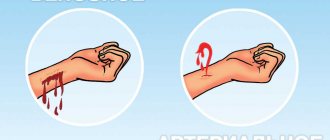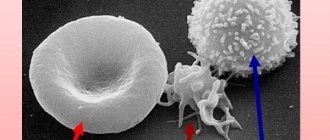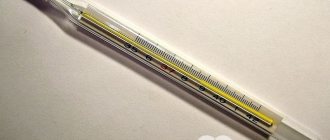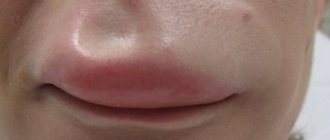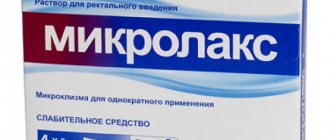Category: Chemical poisoning
Carbon monoxide poisoning is one of the most common poisonings. It occurs due to inhalation of air filled with smoke or carbon monoxide. The toxic effect on the human body of this colorless, odorless gas is undeniable, but the exact mechanism of its action has not yet been proven.
It is important to know that intoxication resulting from poisoning occurs with complications and negatively affects the functionality of internal organs and systems in both children and adults.
What is carbon monoxide?
“The silent killer” is what people call carbon monoxide. This is one of the most powerful poisons, capable of killing a living creature in just a few minutes. The chemical formula of this gaseous compound is CO (one carbon atom and one oxygen atom). Another name for carbon monoxide is carbon monoxide. This air mixture has neither color nor odor.
CO is formed from any type of combustion: from the combustion of fuel at thermal and power plants, from the burning of a fire or gas stove, from the operation of an internal combustion engine, from the smoldering fire of a cigarette, etc.
The toxic properties of carbon monoxide have been known to mankind since ancient times. Our distant ancestors were well aware of how dangerous it is to turn off the stove draft when the wood is not completely burned out. Wanting to retain more heat, the unreasonable owner was in a hurry to close the damper, the whole family went to bed, and did not wake up the next morning.
With the development of civilization, the danger associated with carbon monoxide has not decreased. After all, now instead of stoves in the homes of modern people, gas boilers and stoves are actively working, cars are puffing with toxic fumes on the streets and in garages, and reports periodically appear in the news about tragic accidents associated with CO poisoning.
What is gas poisoning
One of the aggregate states of matter, characterized by high mobility of particles, is gas. According to their chemical properties, gaseous mixtures can be either low-active or potentially explosive. Methane is mainly used for domestic purposes due to its ability to burn. The natural simplest hydrocarbon is relatively harmless to the human body, but the combustion of methane produces carbon monoxide, which is highly toxic and causes carbon monoxide poisoning.
Methane, like carbon monoxide, is colorless and odorless, so when this substance is used for domestic purposes, special odorants are added to warn consumers about a leak. Methane inhaled with oxygen is safe, but in conditions of limited air circulation, household gas can quickly fill the space, displacing oxygen. When methane concentration reaches 20-30%, it can cause symptoms of poisoning and hypoxia. Prolonged inhalation of oxygen-poor but methane-rich air leads to damage to the nervous system.
The effect of carbon monoxide on the body is much more dangerous - signs of intoxication appear at low concentrations (less than 0.1%), and the consequences of poisoning pose a threat to human life. Carbon monoxide is formed not only from methane, this substance is released during any type of combustion, and it has no odor or color. The specific pungent odor associated with carbon monoxide is caused by organic impurities introduced into gas mixtures.
How does carbon monoxide affect the human body?
Carbon monoxide has the ability to bind hemoglobin molecules, thereby preventing the blood from carrying oxygen. The longer a person breathes toxic air that contains carbon monoxide, the faster the pathological process develops. The substance carboxyhemoglobin is formed in the blood. The cells of the body do not receive life-giving oxygen, a headache appears, the person begins to experience suffocation, and the consciousness is confused. The victim does not realize what is happening to him, in this case, self-providing first aid for carbon monoxide poisoning becomes impossible. Help must come from other people.
It takes quite a long time for hemoglobin to be completely cleared of carbon monoxide. The danger to life is directly related to the increase in CO concentration in the air and the concentration of carboxyhemoglobin in the blood. If the accumulation of carbon monoxide in the air is only 0.02-0.03%, then after 5-6 hours the content of carboxyhemoglobin in human blood will be 25-30%.
Rescue actions in case of carbon monoxide poisoning must be very fast, because if the CO concentration reaches only 0.5%, carboxyhemoglobin will increase to lethal values within 20-30 minutes.
Consequences and prevention
Carbon monoxide poisoning causes many unpleasant complications in people associated with deteriorating health.
Doctors divide them into two groups. Early complications appear immediately after poisoning, and late complications appear weeks or even months later. Early complications:
- regular headaches and dizziness;
- slowness of movement and low sensitivity of fingers and toes;
- disruption of the functioning of the intestines and urinary tract;
- deterioration of vision and hearing;
- unbalanced mental state;
- swelling of the brain and lungs;
- impaired blood flow and heart rhythm disturbances;
- death due to cardiac arrest.
What are the symptoms of carbon monoxide poisoning?
The toxic effects of CO on the body can be manifested by the following symptoms:
- When a person is mildly poisoned by carbon monoxide, he may feel weakness, tinnitus, headache, nausea, and the urge to vomit. These signals are evidence of oxygen starvation that the brain experiences.
- In case of moderate poisoning, the symptoms of intoxication increase. Tremors in the muscles, short-term memory loss, and loss of coordination of movements appear. A person may cease to distinguish colors, objects begin to appear in two in the eyes. Later, respiratory function and the functioning of the circulatory system are disrupted. The victim develops tachycardia and cardiac arrhythmia. If a person does not receive quick help at this stage, then loss of consciousness and subsequent death occurs.
- Severe CO poisoning is accompanied by irreversible damage to brain cells. The victim may fall into a comatose state and remain there for a week or more. At this time, the patient experiences severe convulsive seizures, uncontrolled urination and defecation. Breathing is usually shallow and intermittent, body temperature rises to 38-39 degrees. Respiratory paralysis and death may occur. The survival prognosis depends on the depth and duration of the coma.
Forms of poisoning
Based on the severity of symptoms and severity of consequences for the body, gas poisoning is divided into four forms. The degree of damage to internal organs and systems depends on the concentration of gas contained in the air and the time of exposure of the body to harmful substances. Each form of intoxication is characterized by specific symptoms, which are important to know in order to take adequate measures to save the victim:
| Form | Lightweight | Average | Heavy | Instant |
| Degree of gas concentration from the total volume of air, % | from 0.009 to 0.052 | from 0.052 to 0.094 | From 0.1 to 0.99 | From 0.99 to 1.2 |
| Time of exposure at which the form of poisoning is recorded, h | 1-5 | 2 | 0,5-2 | 1-5 min. |
| Characteristic symptoms | Slight decrease in psychomotor functions, mild headaches, shortness of breath, lethargy | Severe throbbing headache, profuse lacrimation, runny nose, deterioration of sensory sensitivity | Tachypnea, loss of consciousness, involuntary muscle contractions, lack of response to stimuli, depressed consciousness and reflexes | Lightning loss of consciousness, constant vomiting, complete lack of response, pulse is difficult to palpate |
| Chances of recovery from poisoning | High (with timely access to fresh air) | High (with timely provision of medical care) | Average (will need to undergo a course of treatment) | Low (possible irreversible consequences for the body, high risk of death) |
Along with the main forms, which are often recorded, there are atypical types of poisoning, which include euphoric and fainting. The exact mechanism of occurrence of these forms is unknown, but presumably such conditions arise due to damage to the center for regulating vascular tone and higher nervous activity. Manifestations of atypical signs of poisoning are typical for persons with cerebral circulatory disorders or a predisposition to nervous disorders.
- Alcohol intoxication: treatment at home
- Hypoxia - what it is, symptoms and signs, degrees and consequences
- Medicines for poisoning: first aid medications
When can CO poisoning occur?
With normal ventilation and a well-functioning exhaust hood, carbon monoxide is quickly removed from the room without causing any harm to the people there. However, according to statistics, more than one and a half million people die from carbon monoxide poisoning in the world every year. In some cases, this happens for reasons beyond a person’s control, for example, during a fire. Usually, people caught in a fire lose consciousness, inhaling the deadly gas, and cannot get out of the fire trap themselves.
CO poisoning is also possible in the following cases and circumstances:
- In rooms with stove or fireplace heating (residential buildings, bathhouses, etc.) in case of untimely closing of the exhaust dampers or poor exhaust.
- In rooms where gas appliances operate (water-flowing heaters, stoves, gas boilers, heat generators with an open combustion chamber); if there is insufficient air flow necessary for gas combustion, as well as if the draft in the chimney is impaired.
- In production workshops where CO is used as a working substance for the synthesis of certain organic substances (phenol, methyl alcohol, acetone, etc.).
- If you spend a long time next to a busy highway or directly on it (on most large highways, CO levels in the air can exceed the permissible standards several times).
- In garages, with the car engine running and no ventilation.
First signs
The effect of gas on the body is difficult to notice immediately. Obvious symptoms of poisoning appear with prolonged inhalation of methane or high concentrations of carbon monoxide. The first signs indicating intoxication due to gas inhalation are:
- breathing disorder;
- headache (characteristic knocking in the temporal region);
- deterioration of hearing and vision;
- clouding of consciousness;
- a feeling of mild euphoria, inexplicable emotional uplift;
- decreased concentration;
- violation of fine motor skills, orientation;
- sore throat feeling.
The sooner measures are taken to stop the gas from entering the body, the greater the likelihood of minimizing the negative consequences of poisoning. When wood fuel is burned in rooms with stove heating, carbon monoxide is formed, which, with proper operation of heating devices, is removed through the chimney. If there is no draft in the furnace for any reason, there is a danger of poisoning. Signs of stove burns, in which you should leave the heated room as quickly as possible, are:
- lacrimation;
- dizziness;
- dry cough;
- slight soreness in the forehead;
- attacks of nausea;
- sudden weakness;
- the appearance of the same type of symptoms in everyone present in the room.
Carbon monoxide poisoning - first aid
It is important to act very quickly, remembering that the countdown is not just minutes, but even seconds. What should you do first in case of carbon monoxide poisoning? The sequence of actions should be as follows:
- Quickly open all windows and doors and carry the person out of the room.
- Call a specialized ambulance team. When making a call, you need to describe the problem as clearly as possible to the operator receiving the call, so that doctors with the necessary equipment are sent to the victim.
- If a person loses consciousness due to carbon monoxide poisoning, it is necessary to lay him on his side. Next, bring a cotton wool soaked in ammonia to his nose (at a distance of 2 cm from the nostrils) and gently wave it. Remember that if you bring ammonia too close, the powerful effects of ammonia can lead to paralysis of the respiratory center.
- If a person is not breathing, then artificial respiration must be started immediately. If the victim has not only lost consciousness, but also has no signs of cardiac activity, then artificial respiration should be supplemented with chest compressions. Such first aid for carbon monoxide poisoning should be done until the arrival of a medical team or until the person begins to actively show signs of life.
- If the poisoned person is conscious, he must be laid down and try to ensure the maximum flow of fresh air. For this purpose, you can fan it with newspaper, turn on the air conditioner and fan. You should put a warm heating pad or mustard plasters at your feet. Alkaline drinking (for 1 liter of warm water - 1 tablespoon of soda) can bring considerable benefit to the victim.
We found out what to do in case of carbon monoxide poisoning and how to provide first aid. Now let's talk about another very important point: it is important for people involved in providing assistance to protect themselves. When removing a person from a poisoned room, you need to cover your airways with gauze or a handkerchief.
Causes of poisoning
A person can be poisoned by carbon monoxide both at home and at work. Toxicologists identify the following causes of poisoning:
- Inhalation of gaseous substances formed during combustion. Carbon monoxide is one of the products of combustion. Quite often, people become intoxicated during fires or staying in a smoky room.
- Gas leak. Carbon monoxide is used in chemical plants as a raw material and reagent. If safety rules are violated, workers may be poisoned by this substance.
- Inhalation of car exhaust. Quite a large amount of carbon monoxide is contained in exhaust gases. If a car engine is running in a confined and unventilated space, a person can very quickly become seriously poisoned.
- Incorrect operation of heating stoves. The use of faulty furnace equipment is becoming a fairly common cause of poisoning. Untimely closing of the damper in the furnace also leads to the accumulation of CO.
What treatment is provided in the hospital?
Victims who have received moderate or severe poisoning are subject to mandatory hospitalization. The main antidote is 100% oxygen. Its uninterrupted intake into the body is 9-16 l/min. occurs through a special mask placed on the patient’s face.
In severe cases, the victim undergoes tracheal intubation and is connected to a ventilator. In a hospital setting, infusion therapy is also carried out using a course of drips with sodium bicarbonate - this helps to correct hemodynamic disorders. “Chlosol” and “Quartasol” solutions are also used for intravenous infusion.
Another drug used by doctors to help victims of carbon monoxide poisoning is Acizol. This drug is administered intramuscularly into the body. Its action is based on accelerating the breakdown of carboxyhemoglobin while simultaneously saturating the blood with oxygen. "Acyzol" reduces the toxic effect of CO on muscle tissue and nerve cells.
Degrees and symptoms of intoxication
Doctors distinguish several degrees of carbon monoxide poisoning:
- light;
- average;
- heavy.
The severity of intoxication depends on the concentration in the blood of the product of carbon monoxide binding to blood proteins - carboxyhemoglobin. The higher the indicator of this substance, the more pronounced the signs of poisoning.
With a mild degree of intoxication, the carboxyhemoglobin content in the victim’s blood does not exceed 30%. The patient is conscious, but his condition noticeably worsens. Mild poisoning is accompanied by the following symptoms:
- compression headaches;
- nausea and vomiting;
- tinnitus;
- increased lacrimation;
- runny nose;
- cough without sputum;
- sore throat.
Since carbon monoxide has no odor, the victim does not always associate these symptoms with poisoning. Patients often mistake symptoms of intoxication for manifestations of a respiratory disease.
In case of moderate poisoning, the level of carboxyhemoglobin in the blood plasma ranges from 30 to 40%. The resulting hypoxia negatively affects the condition of the cells of the central nervous system. The person either loses consciousness for a short period of time, or becomes excessively drowsy, depressed, and poorly responsive to stimuli. Moderate intoxication is also characterized by the following symptoms:
- severe shortness of breath;
- dilated pupils;
- pain in the heart;
- rapid heartbeat;
- redness of the skin and eyes;
- deterioration of hearing and vision;
- convulsions;
- mental disorders.
Severe intoxication occurs when the level of carboxyhemoglobin increases to 40 - 50%. Due to severe oxygen starvation, the patient falls into a coma. A dangerous degree of poisoning is accompanied by the following manifestations:
- bluish skin;
- shallow breathing;
- weak pulse;
- convulsions;
- involuntary passage of urine and feces.
If the CO content in the environment exceeds 1.2%, then a person develops a fulminant form of poisoning. The level of carboxyhemoglobin in the blood increases to 75%. In this case, the victim dies from severe hypoxia within 3-4 minutes.
Providing assistance for carbon monoxide poisoning using folk remedies
The following traditional medicine recipes can be used at home for mild carbon monoxide poisoning. Here are some easy-to-make home remedies that have very effective antitoxic properties:
- Dandelion tincture (only roots are used). To prepare the infusion, pour 10 g of finely ground dry raw materials into a glass of boiling water. Boil for about 20 minutes. and then leave for 40 minutes. Then strain and dilute with warm water (100 ml). Take the product 3 or 4 times a day, one tablespoon at a time.
- Lingonberry-cranberry tincture. What to do after carbon monoxide poisoning with its help? First, for cooking you will need 200 g of lingonberries and 150 g of rose hips. The ingredients are ground as thoroughly as possible and 350 ml of boiling water is poured. Infuse the berries for 3 hours, then strain the product and consume 2 tbsp orally 5 to 6 times a day. spoons.
- Tincture of knotweed herb. 3 tbsp. spoons of crushed dry knotweed are poured into 0.5 liters of boiling water. Leave for at least 3 hours, then strain and drink a glass 3 times a day.
- Rhodiola rosea tincture with alcohol. You do not need to prepare this drug yourself; it is sold at any pharmacy. The method of administration is as follows: 7-12 drops are added to a glass of water. Drink half a glass twice a day.
Video with Elena Malysheva about carbon monoxide
Article rating:
( 2 ratings, average: 4.00 out of 5)
Share with friends:
You may also be interested in:
Propane gas poisoning in adults and children♻ - signs and symptoms, first aid
Solvent vapor poisoning - first medical aid
What to do in case of smoke poisoning - symptoms and causes
Chlorine poisoning - what to do at home, symptoms and treatment methods
Preventive measures to prevent CO poisoning
As already mentioned, carbon monoxide is often responsible for the death of people. To protect yourself and your loved ones, you need not only to know what to do in case of carbon monoxide poisoning, but also try to follow preventive measures, which include the following:
- It is necessary to regularly check the condition of chimneys and ventilation shafts. It is especially important to pay attention to this before the start of the heating season.
- Before using flammable fuel appliances, you should always check that they are in good working order. If a fault is identified in a timely manner, many problems can be avoided.
- If the room has poor ventilation, additional measures must be taken to ventilate it regularly.
- Do not start your car in a closed, unventilated garage and do not sleep in a car with the engine running.
- Purchase a special sensor that responds to CO leaks and install it in your house or apartment.
- Try to avoid being near busy highways, especially during their busiest hours.
Characteristics of methane
Methane is transparent and odorless. Therefore, if this gas is planned to be used for domestic needs, an additive is added in low concentration. Moreover, if a person has a weak sense of smell, even with the additive the gas is not felt.
Despite the fact that methane has relatively low toxicity, it is very dangerous:
- the gaseous substance easily overcomes the blood-brain barrier and affects the brain;
- this substance can inhibit the functioning of the respiratory system;
- affects the central nervous system;
- contributes to oxygen deficiency.
The gas, which is safe in the open air, becomes a real bomb in closed rooms, since there it can easily accumulate and cause poisoning, which, if prompt assistance is not provided, leads to death.
Carbon monoxide sensor
As already mentioned, the presence of carbon monoxide in the air cannot be detected using one’s own senses. To protect yourself and your loved ones from harm, you can purchase a carbon monoxide detector. This small device will continuously monitor the composition of the air in the room. After all, first aid in case of carbon monoxide poisoning should be almost instantaneous, otherwise you may not have time.
In the event that CO levels exceed the required norm, the sensor will notify the owners with sound and light signals. Similar devices can be used for household and industrial purposes. The latter have a more complex structure and are designed for large areas.
Complications
The risk of complications directly depends on the severity of intoxication. Often negative consequences arise even in cases where the victim was given timely help and an antidote was administered. Carbon monoxide poisoning can affect the victim's body for a long time after recovery. The process of restoring health is often very slow.
If the patient has suffered mild or moderate poisoning, then after detoxification he may still have the following symptoms:
- Frequent headaches. This is a consequence of hypoxia. The pain syndrome may intensify with changes in weather and atmospheric pressure.
- Emotional lability. After recovery, patients often complain of frequent mood swings, irritability, and tearfulness.
- Deterioration of cognitive function. It becomes difficult for the patient to assimilate and remember new information.
- Visual disorders. After recovery, visual acuity may decrease. Patients often complain of small black dots flashing before their eyes.
Severe intoxication can have serious long-term consequences. Due to damage to the heart muscle, the risk of myocardial infarction increases. After hypoxia, small hemorrhages often remain in the brain tissue, which cause neurological disorders. In addition, inhaling CO negatively affects the condition of the lung tissue, and pneumonia may occur after recovery.
Risk group
To some extent, we are all at risk and, under certain circumstances, can suffer from CO. Therefore, each of us should know well what to do in case of carbon monoxide poisoning. However, there are a number of professions whose representatives are at greatest risk. These include:
- welders;
- taxi drivers;
- auto repair shop workers;
- diesel engine operators;
- firefighters;
- workers of breweries, boiler houses;
- personnel of steel foundries, oil refining, pulp and paper production, etc.
Prevention
To prevent carbon monoxide poisoning, you must:
- use only serviceable gas equipment, ensure its timely preventive maintenance;
- in houses with stove heating, ensure adequate ventilation, control the position of the stove damper;
- do not work on the car in a garage or repair bay with the engine running;
- When working with carbon monoxide, observe workplace safety precautions.
Video from YouTube on the topic of the article:
Types of CO poisoning
There are 2 types of intoxication:
- Acute - occurs half an hour after the poison enters the body with an increased or high concentration of carbon monoxide in the air. The consequences are always severe and sometimes irreversible.
When the first signs of intoxication appear, emergency assistance must be provided.
- Chronic - usually occurs against the background of regular intake of small doses of carbon monoxide into the human body. Long-term exposure to CO can provoke serious deviations and disruptions in the functioning of all life systems. Initially imperceptible exposure to carbon monoxide leads to pathologies over time.
Acute poisoning
Causes
All factors that provoke acute poisoning are somehow related to combustion products . Potential sources of danger and obvious causes of intoxication:
- heating systems and disruption of their operation: boilers;
- ovens;
- fireplaces;
- gas equipment;
An additional factor is urban smog.
Risk group
An increased likelihood of intoxication is observed in the following population groups:
- babies;
- aged people;
- smokers;
- alcoholics;
- persons suffering from chronic diseases of the cardiovascular system;
- pregnant women;
- people susceptible to chronic diseases of the upper respiratory tract;
- persons suffering from anemia, nervous exhaustion, disruption of the endocrine system.
Women are less susceptible to carbon monoxide exposure than men.
Signs depending on the degree of intoxication - table
| Degree of poisoning | Characteristic symptoms |
| Light | Characterized by typical symptoms of intoxication:
|
| Average | In addition to the above, the following symptoms may appear:
|
| Heavy | Accompanied by serious deviations:
|
Article on the topic: Second ultrasound during pregnancy
Possible complications and consequences
Against the background of acute poisoning, the following complications may subsequently manifest themselves:
- polyneuritis;
- cerebral circulatory disorders;
- cerebral hemorrhages;
- decreased acuity of smell and touch;
- cerebral edema;
- heart disease;
- skin changes in the form of papules, blisters, necrosis;
- nephrosis;
- development of pneumonia.
Chronic poisoning
Typically, chronic poisoning affects people whose activities are associated with heating systems, with the operation of devices and mechanisms operating on the basis of internal combustion engines running on different fuels.
The symptoms in this case will be the following:
- dizziness;
- periodic chest pain;
- disturbing sleep;
- decreased libido;
- memory problems;
- numbness of the limbs;
- nausea, sometimes turning into vomiting;
- cardiopalmus;
- constant fatigue;
- visual impairment;
- frequent headaches;
- sensation of vibration;
- noise in ears;
- disturbance of touch and smell.
Over time, absolutely healthy people may develop atherosclerosis and the appearance of abnormalities in the functioning of the endocrine system. Obvious psychosis cannot be ruled out.
In case of CO poisoning during pregnancy, depending on the period, the following phenomena may be observed:
- fetal deformities;
- pregnancy fading;
- spontaneous early labor;
- stillbirth.
Atypical forms of intoxication
Against the background of carbon monoxide intoxication, atypical poisoning may occur, namely:
- fainting - accompanied by a sharp drop in arterial blood pressure, paleness of the skin and loss of consciousness;
- fulminant - occurs when the body is rapidly saturated with high concentration carbon monoxide, when the CO content in the air is more than 1.2% per 1 m3. In this case, limb spasms and respiratory paralysis are observed. Death occurs within 1–2 minutes;
- euphoric - characterized by psychomotor overexcitation, delusional ideas, hallucinations, and spatial disorientation. Cessation of breathing and cardiac arrest are possible.
Death resulting from CO poisoning is often called “sweet”, which is associated precisely with the state of euphoria, absence of pain and immersion in sleep.
Emergency care for intoxication
Emergency assistance consists of immediately stopping further penetration of carbon monoxide into the victim’s body and providing him with calm, warmth and a high level of ventilation. To do this, you should immediately remove it from the contaminated room and provide access to clean air or oxygen. Bring a cotton swab soaked in ammonia to the nose, rub the chest, apply heating pads to the legs, mustard plasters to the chest and back, give the victim hot tea or coffee.
If breathing stops, it is necessary to resort to artificial ventilation of the lungs in the mode of hyperventilation, administration of respiratory stimulants (lobeline hydrochloride 1 ml of 1% solution, cititon 1 ml). The use of carbogen and methylene blue is contraindicated. It is also necessary to stop seizures with anticonvulsants.
Pharmacological correction of cardiac disorders and prevention of threatening cardiac rhythm and conduction disorders in acute carbon monoxide poisoning is carried out using unithiol 5-10 ml of 5% solution, sodium thiosulfate 30-60 ml of 30% solution, cytochrome C 25-50 mg vitamin E 1 ml of 30% oil solution subcutaneously. Infusion of 5-10% glucose with insulin, B vitamins, ascorbic acid, glucocorticoids is advisable, for example, intravenously 90-120 mg of prednisolone hemisuccinate.
In the presence of hyperthermia, intravenous injections of analgin 2 ml of a 50% solution and craniocerebral hypothermia are indicated. If signs of acute vascular insufficiency appear, injections of mezatone 0.5-1 ml of a 1% solution, ephedrine hydrochloride 1 ml of a 5% solution. The stages of providing medical care to victims of carbon monoxide are presented in the table.
Stages of providing medical care to victims of carbon monoxide poisoning (according to P. Kondratenko, 2001)
| Therapeutic measures | Actions of medical staff | Medicines and manipulations |
| 1 | 2 | 3 |
| First and first aid | Remove the victim to fresh air | In case of cardiac arrest - indirect cardiac massage and mechanical ventilation: breathing “mouth to nose” or “mouth to mouth” |
| First aid | Delivery of the victim to the intensive care unit | Cordiamine or caffeine, or mezaton (1 ml of 1% solution intramuscularly). Ascorbic acid - 20-30 mg in 20-50 ml of 40% glucose solution intravenously; 500 ml of 5% glucose with 50 ml of 2% novocaine and 20-30 ml of 5% ascorbic acid intravenously. Analgin or Reopirin - intramuscularly, as well as glucocorticoids. In case of cardiac arrest - indirect cardiac massage and mechanical ventilation: breathing “mouth to nose” or “mouth to mouth” |
| Qualified medical care | Ventilation using machines in hyperventilation mode using 100% oxygen supply. Cytochrome C - 15-60 mg / day. Antihypoxants (sodium hydroxybutyrate), tranquilizers or neuroleptics, antihistamines intravenously. Symptomatic therapy. Glucocorticoids. |
The most effective method of treating acute carbon monoxide intoxication is oxybarotherapy (at a pressure of 2.5 atmospheres for 30-90 minutes), since inhalation of O2 under pressure sharply accelerates the release of CO from the serum, promotes the disappearance of hemocirculatory disorders, improves breathing and heart function.
Consequences
Medical complications from carbon monoxide poisoning affect almost all organs and systems. The initial condition of the patient and his concomitant diseases are important.
After intoxication, the following pathological conditions occur.
- The central nervous system is damaged. Encephalopathy is a diffuse change in brain tissue, dementia is a decrease in memory and thinking ability, psychosis, parkinsonism, ataxia is impaired coordination of movements.
- Damage to the peripheral nervous system.
- Hearing loss.
- Myocarditis, heart rhythm disturbances.
- Gastritis, colitis.
- Sexual dysfunction - aspermia (lack of ejaculate), termination of pregnancy.
- Disorders of the thyroid gland and adrenal glands.
- Anemia.
Symptoms may disappear for a while and then worsen again. Most of them do not require specific therapy associated with intoxication. But, not in the case of a chronic course.
The consequences of carbon monoxide poisoning in children are more dangerous than in adults. The younger he is, the harder the body tolerates insufficient tissue oxygenation. Impaired consciousness and breathing can lead to irreversible changes in the central nervous system.
Carbon monoxide poisoning in a pregnant woman is unfavorable for the prognosis of pregnancy and the health of the child. The formation of carboxyhemoglobin leads to severe fetal hypoxia. The consequences may be his death, the formation of congenital defects. After the fact of carbon monoxide poisoning, a thorough examination of the unborn child is carried out. Even if intoxication is suspected, it is necessary to seek help from medical specialists.
When is hospitalization necessary?
If a person is poisoned by carbon monoxide, then treatment at home is possible only with a mild degree of intoxication. In most cases, the patient must be admitted to the toxicology department of the hospital. Indications for hospitalization are as follows:
- loss of consciousness (even short-term);
- mental disorders due to poisoning;
- impaired coordination of movements;
- a drop in body temperature below normal;
- short-term cessation of heart and breathing.
Children, pregnant women and patients with cardiovascular pathologies are required to be hospitalized.
After discharge from the hospital, the patient must remain under the supervision of a doctor for some time and undergo all necessary examinations. This will help to identify possible complications of intoxication in a timely manner.
Description of the antidote
Let's take a closer look at the drug "Acyzol". The antidote for carbon monoxide poisoning is administered intramuscularly in an amount of 1 ml. This medicine reduces the binding of hemoglobin to carbon monoxide. As a result, the formation of toxic carboxyhemoglobin is suppressed. This reduces hypoxia and alleviates the patient's condition. In addition, the drug promotes the rapid removal of toxic substances from the body.
The instructions for use of Acizol indicate that the antidote after poisoning must be administered as soon as possible. This will help avoid an increase in the concentration of carboxyhemoglobin in the blood and the development of severe intoxication.
There are no serious contraindications to the use of the antidote. In case of CO poisoning, the drug is administered in any case, since we are talking about saving the patient’s life.
The price of "Acizol" in the form of a solution ranges from 800 to 1100 rubles (for 10 ampoules). This form of medication is used to treat carbon monoxide poisoning.
The drug is also available in capsule form. This form of antidote is used primarily to prevent poisoning. It is recommended that firefighters and rescue workers take one antidote capsule 30 minutes before entering an area exposed to carbon monoxide. The protective effect of the drug lasts about 2 hours. The price of "Acizol" in capsule form is from 500 to 600 rubles.
Rehabilitation
Rehabilitation after severe poisoning is long and difficult. After regaining consciousness, patients are disoriented for 5-7 days, do not realize the severity of their condition, may suffer from memory loss, and may not recognize themselves or their relatives in photographs. Such symptoms are a consequence of prolonged tissue hypoxia.
Some neuropsychiatric disorders may persist even after discharge from the hospital. Patients sometimes complain of deterioration in mental abilities and motor functions of the limbs. In some cases, skin diseases develop.
The prognosis for mild degrees of poisoning is favorable. Signs of intoxication usually disappear completely after a few days of intensive therapy. In this case, as a rule, there are no delayed consequences.
The first signs of poisoning
The intensity and speed of appearance of signs of carbon monoxide intoxication depend on several factors - the initial condition of the victim, the concentration of the toxic substance, the duration of exposure to the toxin, ventilation of the room, meteorological conditions and other reasons.
The first signs of acute carbon monoxide poisoning:
- headache, dizziness, nausea;
- general weakness, attention problems, inappropriate behavior that may resemble alcohol intoxication;
- shortness of breath, chest pain;
- The color of the skin and mucous membranes during carbon monoxide poisoning becomes carmine red (due to carboxyhemoglobin).
Signs of intoxication may resemble a viral infection. If they appear, you should seek medical help promptly to prevent the development of irreversible complications.
Preventive measures
To avoid situations with carbon monoxide poisoning, you need to take the following precautions:
- periodically clean chimneys, pipes and stoves, use all heating means only strictly according to the instructions, and trust the construction of stoves and fireplaces only to professionals;
- it is necessary to systematically ventilate the room heated by stoves;
- when in the garage, the car engine must be turned off, otherwise work outside or with the doors open;
- You cannot stay in a closed car for a long time when the engine is turned on, and you cannot fall asleep in it;
- You can’t stay near highways for a long time; if necessary, you sometimes need to move away to get some fresh air or wear masks.
Carbon monoxide is not something to joke about; it is rarely possible to fully recover after severe poisoning, and it occurs in a matter of minutes. Therefore, you should always be vigilant and eliminate risks whenever possible.
First aid and treatment
Treatment of monoxide intoxication is a complex and responsible process, the result of which largely depends on how quickly and correctly first aid was provided.
Non-specialized first aid in the outbreak
The initial actions of carbon monoxide poisoning are usually performed by people without medical training and equipment. Therefore, the basis of first aid is the evacuation of the victim from the source of chemical contamination and provision of fresh air.
At the time of evacuation, it is recommended to put on a gas mask on the patient, then unbutton his clothes and give him a semi-sitting position. If there is no consciousness, the victim is placed on his side and breathing and pulse are monitored.
It is worth noting that the flow of air, although it must be provided without fail, does not have a noticeable therapeutic effect. In case of CO poisoning, the function of oxygen transfer in the blood is disrupted, and not the process of its entry into the lungs. Simply put, there is enough air in the lungs, but it does not spread throughout the body.
Normal gas exchange is disrupted
First aid
Pre-hospital medical care is provided by the ambulance team that arrived at the scene of the incident.
Emergency medical workers know what to do in case of CO poisoning and carry out the following treatment measures:
- Ensuring adequate ventilation of the lungs in severe cases of poisoning (tracheal intubation, transfer to mechanical breathing);
- In case of heart rhythm disturbances - caffeine or cordiamine, sometimes lidocaine;
- Symptomatic therapy (lowering blood pressure, supporting heart function, respiratory analeptics with preserved spontaneous breathing;
- Antidote therapy (acyzol).
Note: acyzole is an antidote for CO poisoning. Accelerates the excretion of carboxyhemoglobin, reduces the tissue need for oxygen. It is prescribed intramuscularly, 1 ml, immediately after removing the victim from the lesion and daily for 7-10 days. The duration of the course does not depend on the severity of intoxication.
Medical care in hospital
Hyperbaric oxygen therapy is an effective method of treating victims.
Pharmacology for toxic damage to the body by carbon monoxide does not significantly affect the situation. Therefore, the main method of treatment today is HBO - a course of hyperbaric oxygenation.
To carry out the procedure, the patient is placed in a special chamber where oxygen is supplied under pressure. The duration of one session is about 40 minutes, the course of treatment is 8-10 days. The average price for 1 procedure in Moscow is 2,500 rubles. However, for health reasons, it is performed free of charge.
Another treatment method is to irradiate the patient with a quartz lamp. Ultraviolet rays promote accelerated excretion of carboxyhemoglobin. In practice, this method is rarely used due to the high risk of side effects (eye burns, skin diseases).
Drug therapy is carried out in accordance with the general algorithm of care. The doctor decides what to use in case of CO poisoning.
Typically, the treatment regimen looks like this:
- Infusion of saline solutions and crystalloids up to 5-6 liters per day;
- Diuretic (Lasix at a dose of 80-100 mg/day);
- Antidote treatment (acyzol 1 ml, IM, 3 times a day);
- Psychotropic medications for psychomotor agitation (aminazine, 2 ml, IM, 2 times a day);
- Symptomatic therapy (relief of disease symptoms).
- Drugs that reduce the brain's need for oxygen (riboxin 10 ml, IV, 3-4 times a day);
- Nootropic drugs (Cerepro 5 ml, IM, 1 time per day);
- Antibiotics (ceftriaxone 1 gram 3 times a day).
The doctor always draws up an individual treatment plan
According to the doctor's decision, the instructions for using a particular drug can be adjusted to increase the dose or number of doses. Some items in the above list may be excluded. For example, the volume of infusion for cerebral edema is reduced to 800-1000 ml/day.
Factors contributing to poisoning
Carbon monoxide, which in chemical terminology goes by the simple designation “CO,” is a product of incomplete oxidation. In simple terms, such gas is a side effect of combustion. Its main danger lies in the fact that it penetrates the body completely unnoticed, without causing an immediate external reaction. Signs of damage to the victim’s respiratory system, which reacts most quickly to such intervention, appear an order of magnitude later.
As soon as gas components enter the blood, they spread even faster than oxygen does. In the blood, a health-threatening composition begins to bind to hemoglobin, which results in compounds that are resistant to decay. We are talking about carboxyhemoglobin.
The physiological picture ends with the fact that hemoglobin loses its natural ability to transport oxygen to cells. The victim experiences hypoxia, which means oxygen starvation.
Some citizens believe that medical care for carbon intoxication may only be required for people who work closely with combustion products. But in practice, even living in a metropolis with a huge number of cars emitting this gas can cause poisoning.
Exhaust gases in an open space usually provoke mild degrees of intoxication, which are expressed in weakness and a general deterioration in well-being. After a while, after receiving a portion of fresh air, the victim will come to his senses on his own, and the external symptoms will gradually disappear.
The situation is much more serious when qualified assistance is required in case of large fires. Fires are especially dangerous in wooded areas where there are peat bogs.
But while most people have at least heard about the above threats, the problems associated with isolated new buildings remain unknown to many. We are talking about the correct operation of a number of specific heating devices, which, if their operation is destabilized, can provoke a fire. Due to the nature of the building, getting out of an enclosed space or neutralizing CO-saturated air becomes problematic.
In production, workers who have to daily deal with the generation of organic substances such as methyl alcohol and acetone need to use carbon monoxide. It is required for the stable synthesis of substances, which are then used to implement many specialized tasks.
Treatment
Gas poisoning requires complex treatment, since all organs and systems are affected. In short, resuscitation is carried out: an antidote is administered intramuscularly, the victim is placed in a sterile box and connected to life support equipment.
The patient is connected to life support equipment.
Further treatment is aimed at restoring the functioning of damaged body systems. The brain, central nervous system, heart and lungs are often severely damaged. Therapy depends on the severity of the condition at admission and complications.
Complications and consequences
In addition to the pathological symptoms directly during the poisoning process, the victim may develop various complications in the post-reactive period, even with timely and complete provision of both first pre-medical and subsequent inpatient and resuscitation care.
Short term
Most of the consequences described below occur 1-2 days after carbon dioxide poisoning:
- CNS . Lesions of the nervous periphery with limitation of motor activity and sensitivity, constant pain in the head, brain swelling, disruptions in the gastrointestinal tract and urinary system, development of new and progression of chronic mental diseases, visual and hearing impairment;
- Respiratory system. Pulmonary edema ;
- The cardiovascular system. Violation of coronary circulation and heart rhythm;
Medium term
Most of the consequences described below occur 2-30 days after carbon monoxide poisoning:
- Central nervous system, paralysis, various chorea . Systemic psychoses with memory loss, alternating with attacks of apathy, are also diagnosed. Less commonly – blindness and parkinsonism;
- Respiratory system . Secondary bacterial pneumonia, obstructive bronchitis;
- The cardiovascular system. Myocarditis, angina pectoris, myocardial infarction, cardiac asthma.
Clinical signs
Coma is one of the main signs of severe poisoning.
The severity of CO intoxication depends on the time spent in the lesion and the concentration of the toxic substance.
The following degrees of poisoning are distinguished:
- Lightweight;
- Average;
- Heavy.
A mild degree is characterized by headache, chest pain, lacrimation, tachycardia, and increased blood pressure. Hallucinations are possible.
There is virtually no threat to life, but the victim still needs medical care and observation. Poisoning of this type often occurs due to excessive hookah smoking or short-term exposure to a gas concentration zone not higher than 0.02-0.04%.
With a moderate degree of intoxication, the patient needs hospitalization, since the symptoms that arise can be life-threatening. Such patients experience hypertension, tinnitus, drowsiness, and short-term fainting. It is possible to develop paralysis against the background of preserved consciousness.
Call an ambulance soon
The question of what to do in case of severe gas poisoning is not up for discussion. The patient needs urgent hospitalization and placement in the intensive care unit. The threat of his death is extremely high. As a rule, such patients develop generalized convulsions, deep coma, severe cyanosis of the skin, and discoloration of the mucous membranes.
A severe complication of intoxication is cerebral edema and nephropathy with the appearance of myolysis products in the urine. The video in this article will help you better understand what happens to a person who has inhaled carbon monoxide.
Note: myolysis is the destruction of striated muscles with the release of its toxic products into the blood. When affected, CO is a consequence of prolonged hypoxia.
The most severe poisonings occur even with short-term inhalation of high concentrations of carbon monoxide. Thus, when the CO content in the air is about 1.2%, loss of consciousness occurs after 2-3 breaths. Death - within a few minutes.
Health care
Further first aid measures for carbon monoxide poisoning are taken by a team of doctors and paramedics. It is necessary to reduce the harmful effects of CO on the body, carry out antihypoxic therapy, and restore normal breathing and heart function. The algorithm for providing emergency medical care is as follows:
- As an antidote for carbon monoxide poisoning, it is necessary to administer the drug "Acyzol". This remedy helps cleanse the body of toxins and reduce the formation of carboxyhemoglobin.
- If the patient is conscious, then inhalation of oxygen is indicated. O2 is supplied using a special cylinder or oxygen cushion. Oxygen therapy helps reduce hypoxia and reduce the concentration of carboxyhemoglobin in the blood.
- If the victim does not have a pulse or breathing, then an adrenaline injection is given. This hormone helps activate cardiovascular activity. Only after this can further resuscitation measures be carried out.
- Then they begin artificial pulmonary ventilation (ALV) using a reusable Ambu bag (adult or child). This is a special device for manual resuscitation. Air is supplied directly into the patient's lungs through a tube or mask by pressing rhythmically on the air reservoir.
- If after the above measures the patient’s heart function has not recovered, then a precordial stroke is performed. From a height of approximately 20 cm, the doctor hits the victim’s sternum with his fist. This measure is contraindicated if the patient continues to have respiratory movements and has a pulse in the carotid artery.
- If the precordial shock does not lead to the desired result, then a defibrillator is used to restore the heart.
After providing first aid, the doctor decides whether the patient needs to be hospitalized in a hospital.
